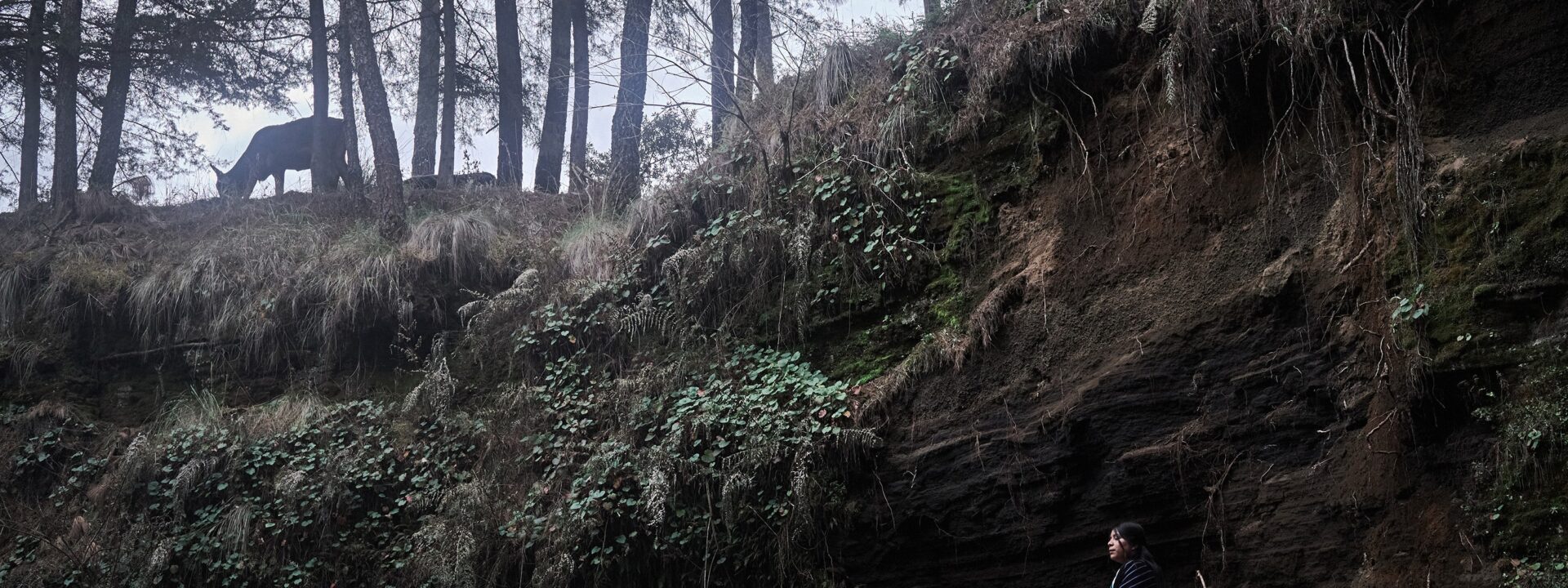In Mexico, when nature suffers, women suffer too. Despite facing many forms of oppression, Mexican women—deeply connected to the environment—know better than anyone how to defend and protect the natural world. As mothers, daughters, and sisters, they recognize the signs nature sends: they hear the cries of the forests and the sea, and they feel the pain of living beings. The environment becomes an extension of themselves, as close as family or friends.
This fight takes many shapes—from compassion to resistance, from individual action to collective struggle. For Earth Day 2025, we highlight four women (and communities of women) across Mexico who are working to protect the natural world around them.
### Sinaloa
In the coastal state of Sinaloa, women from three Yoreme-Mayo indigenous communities have spent over a decade fighting a petrochemical mega-project. Around Ohuira Bay, they formed the collective Aquí No, made up of about 600 people from the towns of Lázaro Cárdenas, Ohuira, and Paredones. In each community, women lead the resistance, despite threats and intimidation in a region plagued by organized crime.
GPO, a subsidiary of a global fertilizer giant, chose this bay—connected to the Sea of Cortez—to build an ammonia plant for industrial agriculture. The facility would extract huge amounts of water from the shallow bay and return it warmer and saltier, devastating the fragile ecosystem that shelters endangered marine life. The company has already destroyed two hectares of mangroves in a sacred Yoreme-Mayo site to build offices.
“You should need permission even to cut a twig, because everything has life,” says Lolo, a leader from Ohuira. Over ten years of resistance, the women have educated themselves in science and law to defend their rights. Their mission is to save the bay and its people—because in their worldview (anya in the Yoreme language), everything is connected.
### Xochimilco
Following her grandfather’s tradition, Gabriela Alejandra Morales Valdelamar keeps jars of seeds in her home—including a type of corn specially adapted to Xochimilco’s salty waters. The canals and chinampas (floating farmland) southeast of Mexico City are remnants of pre-Hispanic agriculture, recognized by UNESCO as a cultural treasure. Yet drought and urban sprawl have drained the area, reducing its farming capacity by 90%.
Gabriela’s family abandoned their chinampa years ago, but after studying biology, she returned. “I realized that two hands working the land do more than textbooks,” she says. With neighbors, she revived ancestral knowledge—rescuing native seeds, relearning chinampa techniques, and navigating the canals in traditional cayuco boats. Her return symbolizes Xochimilco’s resistance against Mexico City’s expansion.
She named her project Tlazolteotl, after the goddess of life and death. “The chinampa is like compost—dead matter nourishes new life,” she explains. “To plant here is to sustain Xochimilco’s culture.” Gabriela also teaches women to farm and row, and in her home, she sows another kind of seed: “Now, I plant ideas. I know they’ll bear fruit—a legacy my daughter can one day offer this land.”
### Michoacán
(Continued…)The black sand crunches under María Teresa Bravo Perucho’s feet as she walks across the dry bed of Angahuan’s main spring. Deforestation has stripped the land bare, eroding the soil layers that were washed away during the rains. Now, the community struggles with severe water shortages for daily use.
Angahuan lies at the base of the Paricutín volcano, deep in Michoacán’s avocado-growing region, which supplies three-quarters of Mexico’s harvest. But avocado farming is destroying the forests and disrupting the balance of this autonomous Purépecha community, where land is managed collectively. Nearly all of Angahuan’s 6,000 residents depend on avocados, directly or indirectly—a situation made even more complicated by the presence of organized crime in the area.
María Teresa was elected president of Angahuan’s indigenous council, becoming the first woman to hold the position. Her mission is to unite the community, strengthening it enough to resist the relentless deforestation. “It’s about dialogue and reflection with the people,” she explains.
Her first step toward change was leaving her studies in orchard management to return to Angahuan. She credits the women in her family, especially her mother, for inspiring her decision. Together, they used to plant trees for reforestation. Her mother, who dreamed of caring for a piece of forest, showed her “how a woman thrives in the countryside—the connection and energy she finds when she has her own land and starts planting.”
—
In Oaxaca, Cirila Martinez moves swiftly among the tangled roots of the mangroves in Laguna de Chacahua. For years, she has lived in this national park on Oaxaca’s Pacific coast, a Ramsar-protected wetland since 2008, home to sea turtles and migratory birds. But for the past 17 years, Cirila says, the lagoon has been in crisis.
In the early 2000s, authorities built infrastructure in the lagoon, including a breakwater at Cerro Hermoso’s mouth near El Zapotalito. The consequences were disastrous—the lagoon’s opening closed, cutting off the mix of saltwater and freshwater. Fish died off, the tichinda mussels that sustained the community vanished, and fishermen stopped working. The mangroves began to wither.
Cirila, who learned to fish out of necessity—”we couldn’t afford to send our children to school”—has since fought to save the lagoon. Seeing nature, “which is like my family,” suffer, she joined forces with NGOs and officials to restore it. “I hold on,” she says firmly, speaking of her work with Mujeres de Restauración del Manglar (Women of Mangrove Restoration).
For over a year, she has maintained a nursery of young mangroves ready for planting. But bureaucracy remains the biggest hurdle—local authorities still haven’t granted the permits needed for restoration. “We’re not harming the lagoon. We want to protect our mangroves, which shield us,” she says.
Recent heavy rains have brought hope. For the past four months, Cerro Hermoso’s mouth has reopened, reconnecting the lagoon to the sea. Some fishermen are back on the water catching shrimp, and beach restaurants are seeing tourists again. Already, the mangroves are showing signs of recovery.


